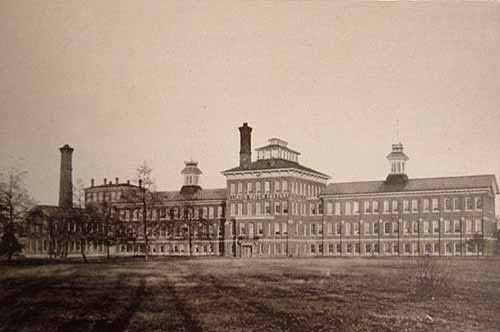MADE IN/BUATAN: USA
CIRCA/TAHUN: 1960's
MODEL: ILLINOIS SQUARE
CRYSTAL/CERMIN: SCRATCH FREE ACRYLIC CRYSTAL
MOVEMENT/ENJIN: ILLINOIS 15 JEWELS MANUAL WINDING MOVEMENT
DIAL COLOR: WHITE CREAM
FUNCTION/FUNGSI: HOUR, MINUTES AND SUB SECOND AT 9:00
HANDS/JARUM: LUMINOUS BLUE METAL HANDS
MARKERS/TANDA WAKTU: LUMINOUS ARABIC MARKER
CASING : 14K GOLD FILLED
BEZEL: 14K GOLD FILLED
LUGS: 20mm
MEASUREMENT/UKURAN: 27mm DIAMETER w/o CROWN and 33mm LUG TO LUG
DITANDA/ENGARVED BACK CASING: NONE
CROWN: ORIGINAL UNSIGNED ONION CROWN
STRAP/TALI: GENUINE BLACK LEATHER BANDS
SIZE STRAP/SAIZ TALI: 8.5" FULL LENGHT
CONDITION: WORKING AND KEEPING TIME, EXCELLENT CONDITION
MY PRICE/HARGA :RM990 (NEGOTIABLE)
LIST RM990 SOLD RM


BRIEF HISTORY OF ILLINOIS WATCHES
Illinois Watch Factory
The Illinois Springfield Watch Company was organized in 1869 primarily through the efforts of J. C. Adams. The first company Directors were J. T. Stuart, W. B. Miller, John Williams, John W. Bunn, George Black and George Passfield.
John Stuart was a Springfield lawyer and former partner of Abraham Lincoln. John Williams was president of the First National bank of Springfield. William B. Miller was a local merchant. John B. Bunn owned a grocery business.
Though the first movements were produced in 1872, the company really didn't achieve full production until 1875. By serial number, the first watch made was the "Stuart" model, followed in order by the "Mason," Bunn," "Miller," and finally the "Currier. The first stem-wind watch was produced in 1875. The early Illinois models were key-wound and key-set and are quite collectible today. Illinois later produced an extensive line of extremely fine and accurate Railroad-grade pocket watches like the "Sangamo Special," "Bunn Special" and "Santa Fe Special" (just to name a few).
Illinois: A Great American Watch Since 1870
In 1879, due to financial difficulties, the company was reorganized and the name changed to the Illinois Springfield Watch Company. By 1885 the company name was changed yet again to the Illinois Watch Company.
Purchased by Hamilton
The Illinois Watch Company was purchased by Hamilton Watch Company in 1927, but continued to produce Illinois watches under Hamilton management until 1932 (the year the last "true" Illinois watch was made). Hamilton continued producing Illinois watches in the Hamilton factory until 1939.
The Illinois Watch Company produced watches under contract for several different brands, including Burlington Watch Company (Chicago, Illinois) which operated primarily as a mail-order business, and Santa Fe Watch Company (Topeka, Kansas). There is some question as to whether Burlington was actually a subsidiary of Illinois. Watches produced under the Burlington name include some very fine (including some railroad grade) watches, which are nearly identical to Illinois movements. Illinois also produced watches for the Plymouth Watch Company (Sears Roebuck) and the Washington Watch Company (Montgomery Ward).
Illinois Watch Case Company
NOTE: The Illinois Watch Company should not be confused with the Illinois Watch Case Company of Elgin, Illinois. The Illinois Watch Case Company was a major manufacture in the city of Elgin, Illinois. It manufactured watch cases under many brands, such as "Elgin Giant," "Elgin Pride," "Tivoli," "Spartan," and "Elgin Commander." The use of the name "Elgin" in their brand names, or marking the cases with "Elgin USA" has often lead people to believe that a watch was made by the Elgin National Watch Company when it was actually made by another manufacturer, or to think that a watch no longer has its original case because it is "now in an Elgin case."






















































